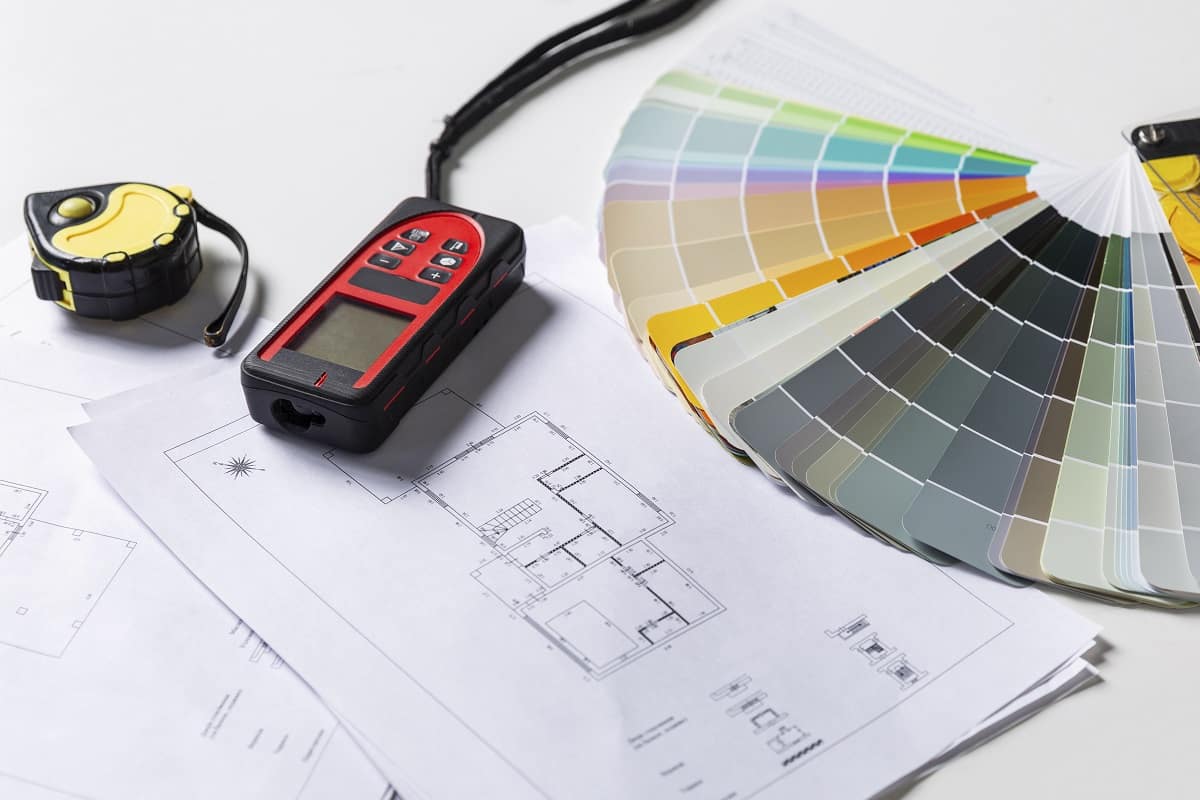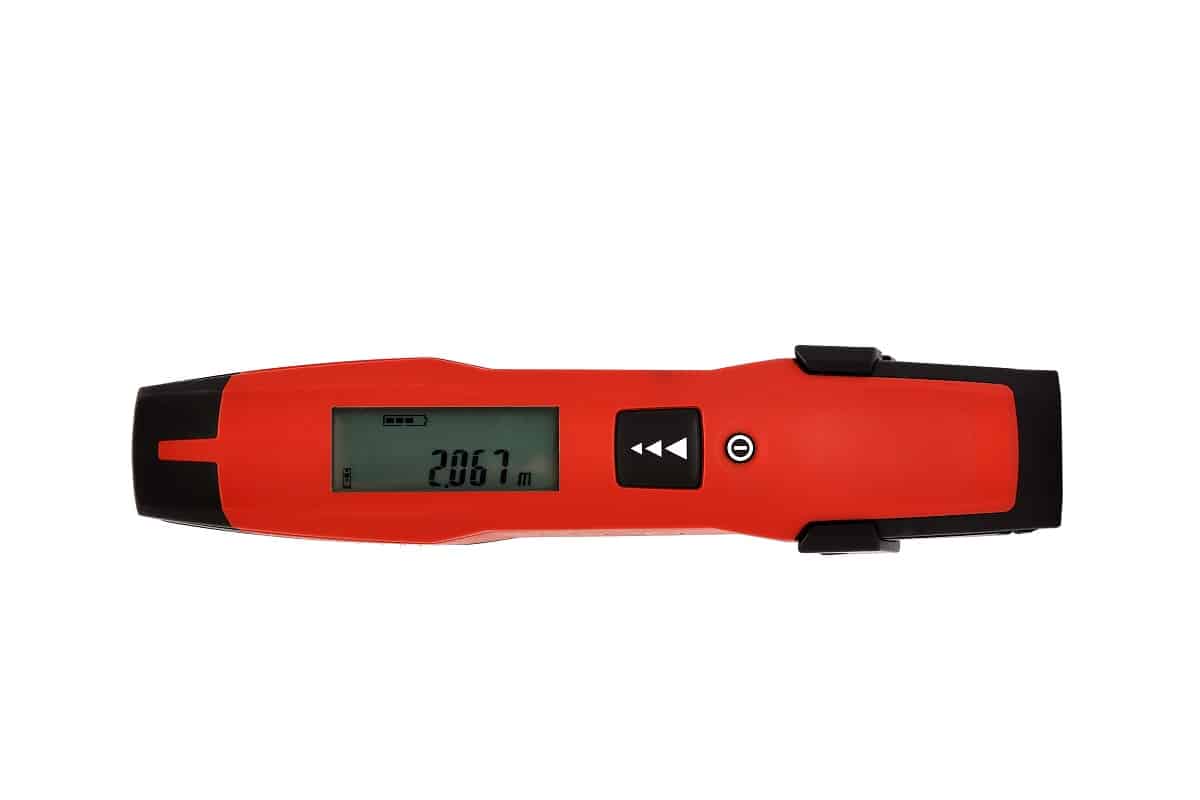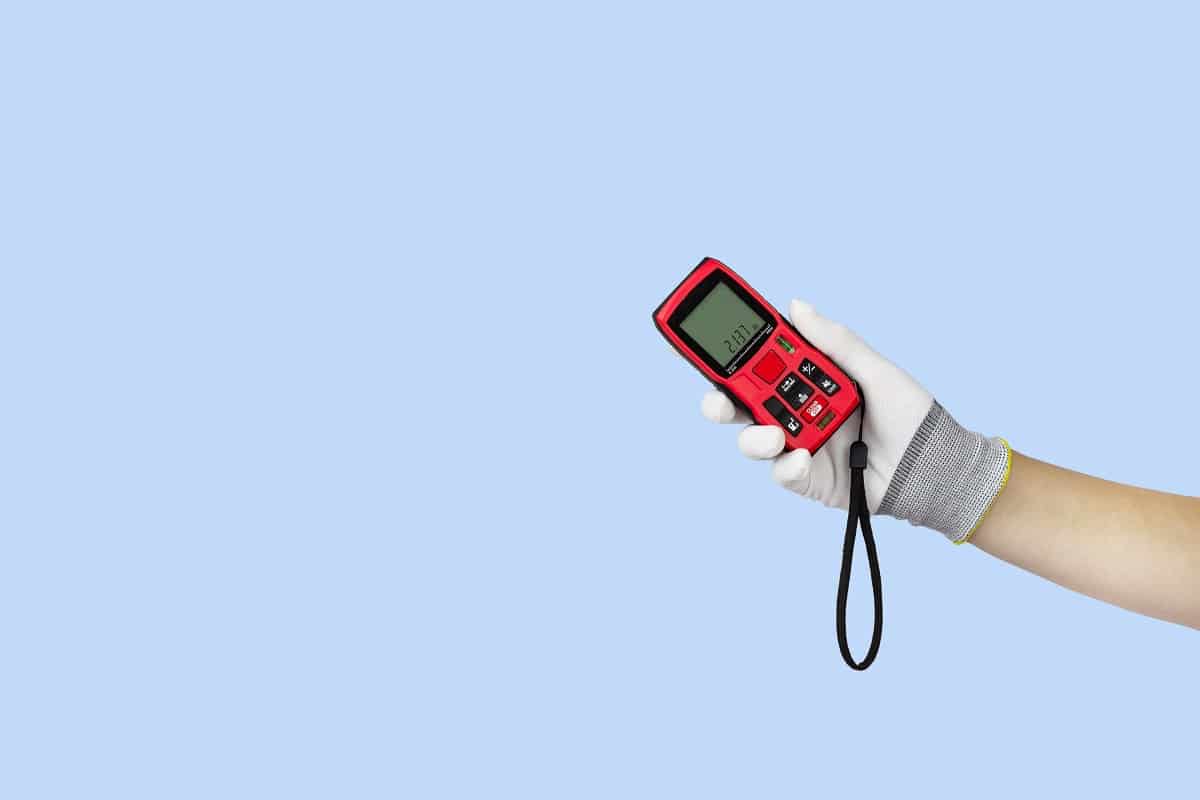Lasers can be used to measure longer distances without physical contact using an advanced laser measuring tool.
In fact, laser distance measurement (LDM) devices ensure the most precise and sensitive length measurements for high-speed recordings and large measurement ranges. These tools are used in several applications like crime scene investigations, architecture, and military operations. And, remember a laser device is one of the most common measuring tools of engineering professionals, especially civil engineers.
Simply direct the laser to the point you want to measure, turn on the machine, and the result will be displayed. However, measuring distance using an LDM can be trickier than it sounds. So, you need to know how the device works and how to get accurate measurements.
In this guide, we discussed the operational process of an LDM in detail. Apart from that, we’ve discussed the limitations of this method and how to overcome them.
Are you a DIYer enthusiast? Want to learn and gain experience in multiple things? Then check out our next article on how to do screen printing, to get an experience in screen printing techniques.
So, without further ado, let’s continue reading!
How Does A Laser Distance Meter Work?

The operating principle of a Laser Distance meter is pretty basic. It measures the distance between two points by illuminating a laser pulse at the target point and calculating the time it takes to reflect. As it uses light, it eliminates the limitations involved in measuring the distance between two points and offers the following benefits:
To begin with, unlike a regular tape, you do not require the help of another person. Simply pressing the ”on” button will illuminate the laser light on the other end. Secondly, measuring high places like ceilings will be more manageable, considering you don’t need to climb on high ladders.
Apart from that, measuring distance through tight spaces is much easier with a laser distance meter. You’ll get an accurate measurement as long as light travels through the space and reaches the other end. So, here’s your answer to how laser measurements work.
How To Measure Distance Using Laser?
A. Setting Up
Check the setting of the measurement unit before you begin measuring; otherwise, the measurements would seem far off. To set your preferred measurement unit, press the unit key to move through the options available on the device.
The unit is changed every time you press the key, starting from meters to inches. You can also set the device in the middle of the work or after measuring.
Press the reference key longer on LDM (Laser Distance Measure) to turn the backlight on when working in dark areas. Then, turn the meter on by pressing the MEAS key to start measuring and press it again to trigger the measurement.
B. Measurement
To use a laser distance measure, hold the device firmly on your chosen starting point. It can be a floor, wall, a door frame, or anything as long as it is stable.
Then, switch on your laser distance and point it to the other end or to the point until which you want to measure. While doing so, make sure the light isn’t obstructed by anything nor directed towards windows, glass, or mirrors. You can then press the measure button and keep the laser on until the screen displays the distance.
Well, measuring distance using lasers isn’t much different from using metal tape. Rather than stretching the tape from one point to another, you’re pointing a light beam across it. As mentioned earlier, laser distance measurements are more convenient when measuring the distance of closed spaces or from floors to ceilings.
If you want to put the measuring meter in a continuous mode or undertake a continuous measurement, keep pressing the MEAS for a long time until you hear a beep. Using this mode, scan a corner or an area while your meter records a maximum and minimum value.
C. Subtracting And Adding Multiple Distance Measurements
There are numerous instances where you need to subtract or add multiple measurements. Assume you’re standing in a room and want to know the distance between the two subsequent opposing walls. So, place your back against a wall and point the light to another wall to take the first measurement. Then, turn around to take a second measurement. You can add them manually to get the overall distance.
Or, use an Addition function, which automatically adds up the two obtained measurements to give the total distance between two walls. To use this function, take the first measurement, press Add or the “+” key while pressing the MEA S key, and then take your second measurement.
The findings are presented as large numbers at the bottom of the screen, while the individual measurements are displayed as small numbers at the top. You can keep going like this by pressing the “+” and MEA S keys simultaneously, and the LDM will continue adding up the measurements.
If you’ve wrongly added up a measurement, just subtract it from the overall value by pressing Subtract or the “-” key. It’s also possible for you to add or subtract a measurement simultaneously while measuring.
In case you wish to cancel the measurement, press the CLR key and press it again to exit subtraction or addition mode.
D. Area Or Volume Measurement
1. Area Measurement
Laser tape measure is not just about measuring distance but can also be used to measure volume and area!
Press the Volume/Area key once for area measurement, which is denoted by a cube-shaped icon. Measure the first distance (length), by pressing the MEA S key while doing it again to get the second distance (width) measured. You can now just relax and let the machine do all the calculations and display the overall area of the room. Your traditional measuring tape can’t do that!
For applications like carpeting, floor layout, and other measurements, this area measurement feature of the LDM comes in handy.
2. Volume Measurement
Now, let’s move to 3D, that is, measuring volume. There’s not much difference between the measuring area and volume, so start with pressing the cube-shaped icon on the LDM. Measure the length, width, and height of the room by pressing the MEAS key consecutively.
The device will then calculate the overall volume of the room and display it in large numbers in standard volume unit cubic meters, cubic inches, or cubic feet, depending on the unit setting. This feature is helpful in ventilation requirements, HVAC coverage computation, or measuring the pool volume.
Similar to area measurement, the device allows for subtraction and addition of measurements.
Techniques For Measuring Laser Distance
A. Triangulation
It is a geometric method that’s used to measure distances in the range from 1mm to up to several kilometers.
B. Time-of-flight Measurements
Also known as pulse measurements, the basis of this method is the time taken by a laser emitted to hit the target and reflect back to the sending device. The method is used in several laser range finders, and the accuracies of these devices range from a few millimeters to centimeters.
C. Phase Shift Method
Some laser range finders use this method, employing an intensity-modulated laser beam. In this method, the phase shift of intensity modulation is related to the flight time. Compared to interferometric techniques, accuracy levels are much lower, but they allow users to make unambiguous measurements over long distances and are appropriate for diffuse reflection.
The phase shift method is also known as time-of-flight measurement when the flight time is proportional to the phase shift.
D. Ultrasonic Time-of-flight Measurements
Ultrasonic time-of-flight measurements are applicable for measuring short distances, and the accuracy levels of this method are pretty high compared to the aforementioned methods. The LDM device uses a laser pointer to get the light to illuminate in an appropriate direction.
E. Frequency Modulation Methods
This method uses frequency-modulated laser beams with a repetitive linear frequency ramp. The measuring distance is converted into a frequency offset which is further measured through a beat note of the received and sent-out laser beam.
F. Interferometers
Interferometers maintain accuracy in measuring the distance that’s much better than the wavelength of the used light.

Professional Use Of Laser Distance Measures
A. Architecture
Real estate agents, remodeling contractors, and surveyors use LDMs to get accurate property measurements and save time. In contrast, measuring distance was a complex job and required ladders and two people. With the availability of LDMs, professionals can now work alone and take the measurements within seconds. This enables them to be efficient and serve more clients.
Other uses of this device are verifying blueprints with actual, laying parking lots, and measuring building dimensions.
B. Electrical
Electricians use this equipment to precisely measure distances in tight spaces where they previously had to guess the wire length to be put. Obstructions like electric cables are not a problem anymore, and they don’t need to force themselves into tight spaces to take measurements.
Other potential uses of LDMs for electricians include:
-
- Measuring the height of a high-voltage line
- Determining distance for calculating drops in voltage
- Measuring the exact length of the cable
- Determining the distance of cable breaks
C. Engineering
LDMs have become a top choice for project managers and civil engineers due to their varied applications. Cranes are an essential asset for construction, but major safety risks are introduced in a construction project due to their size and need to be managed well. Crane height adjustments, accessory selection, and safety precautions rely on accurate measurements.
Besides that, the device eliminates the need for other devices and resources, which is essential when using manual tape. Before this, several people and aerial lifts were used to take measurements of the property.
How Accurate Are These Laser Measurements?
Most measurements taken using an LDM are generally accurate within ⅛ inches, while some are even accurate within 1/16 inches. However, the accuracy levels are maintained using the measurable range of a laser. And the maximum distance an LDM can measure ranges from 100 to 1,000 feet, depending on the model you’re using.
For indoor or residential use, you won’t need a laser measurement device with more than a 50 to 100-foot range. But for industrial use, you will need outdoor and commercial laser measurers designed to measure larger distances outside. These have a greater accuracy level, with a 1/16-inch rather than a ⅛-inch margin of error.
Can You Use A Laser Measurement Outside?
Yes, laser measurement does work outside. However, as these devices use reflected light to calculate distance between two points, some outdoor conditions may interfere with their accuracy. For example, rain makes it impossible to take measurements, while bright sunlight cuts down the distance you’re measuring.
For some devices, the measurable limit in sunlight is as low as 30 feet, so it becomes practically impossible to detect laser light in bright sunlight. It complicates work in most residential yards and limits its usage in large outdoor areas.
If you work mostly outside, some specially designed laser distance measures are installed with optical scopes to improve their performance. The laser is guided by an inbuilt viewfinder and widens the measured distance, allowing this equipment to be used even on sunny days.
Apart from that, many devices feature a digital zoom technology that lets you point the laser to the exact point, especially if it’s not visible to your naked eye.
Limitations Of Laser Measurements
A. Need For A Solid Target
Even though some laser distance meters don’t need an additional reflection target, there’s a chance of a poor reflection if the target is very far. So, you need to place a solid target to get an exact distance measurement.
B. Difficulty In Measuring Outdoors
As already mentioned, measuring distance outdoors using a laser distance measurement device can be a problem. The reflection becomes weak, and you’ll need an extra solid flat or a more robust reflective surface. Apart from that, laser beams can get affected by the same atmospheric distortions, similar to white light.
C. Proper Use Of Instrument
Although these laser measurement devices provide accurate results, using the instrument properly is essential. And you should make sure to take care of the target and the type of surface.
D. Dust And Water Sensitive
This digital measuring device is sensitive to dust and water. Cheaper models tend to get damaged soon if used in harsh conditions. So, having an excellent IP-rated device to use in a harsh environment is vital.

How To Measure Distance Using Laser Final Words
That’s all we have to tell you about LDMs.
We hope you now understand the detailed mechanism of this device and can use it to obtain accurate measurements. To get the best results, make sure you can see the laser dot on the target wall, which helps if it’s opaque. In order to obtain an accurate measurement, use a separate target plate if the target is translucent or transparent.
If you encounter an obstacle while measuring, be creative. You can measure the distance by working around the objects using the device’s indirect measurement option.
With this, it’s a wrap. Signing off with best wishes!


